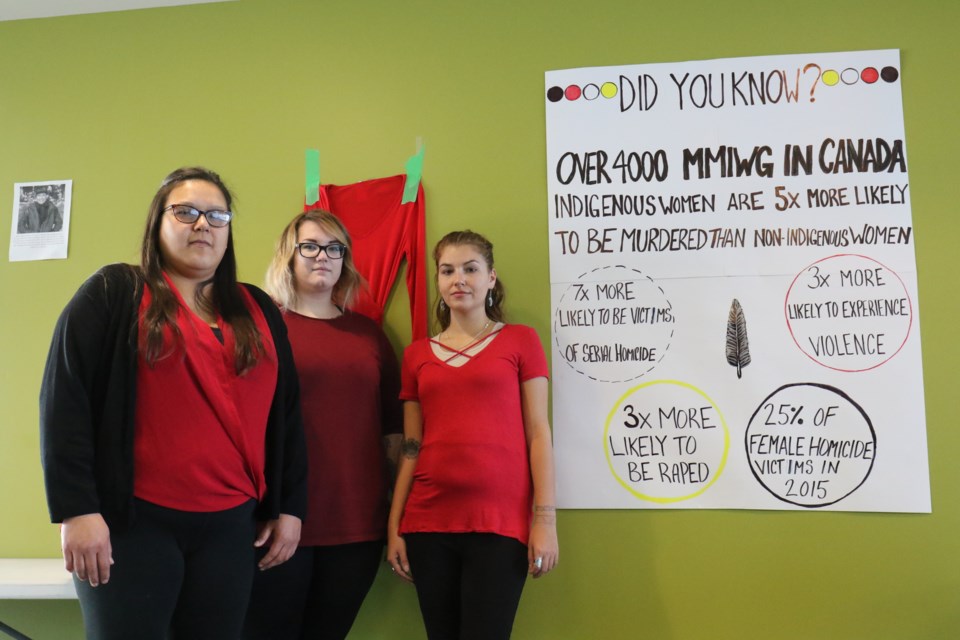Students at Sault College may have noticed a number of bright red footprints on the floor Friday.
The cut-out footprints mark a trail toward an information wall, where a number of red dresses, and photos of missing and murdered Indigenous women, are prominently displayed.
For a group of Indigenous students participating in the global citizenship class at the Sault Ste. Marie-based college, it’s a meaningful take on a school project.
“We’re supposed to attend an event in the community, but we kind of just decided to come up with our own event to raise awareness for missing and murdered Indigenous women,” said Sault College student Mercedes Edwards. “We just thought this was a really important issue and wanted to dedicate an event to this.”
The group of students made a poster that used information initially presented by the Native Women’s Association of Canada, which revealed that Indigenous women are:
- Five times more likely to be murdered than non-Indigenous women
- Seven times more likely to be a victim of serial homicide;
- Three and a half times more likely to experience domestic and sexual violence.
“There’s over 4,000 missing and murdered Indigenous women in Canada, and a lot of ignorance about the topic, and a lot of inactivity coming from the government and the police,” Edwards said.
People in positions of power, [such as] teachers, police officers...those are all people who should be educated on this issue, and I think that should be mandatory.”
The group of students say that much of the ignorance around the topic stem from misconceptions perpetuated by mainstream society.
“If you tell somebody that your family member went missing or was murdered, they assume that they were working in the sex trade,” said Edwards. “There’s a lot of assumptions that are made that these women were kind of asking for it. I think that’s where a lot of the ignorance comes from.”
As Edwards speaks with SooToday.com, a couple of students, drawn towards the display by the red footprints, stop to read captions underneath the photos of missing and murdered Indigenous women. She hopes that students will stop to ask questions.
“I think that a lot of people are aware of the issue,” said Edwards. “So at least it will just be getting the awareness out and be a catalyst for conversation.”
